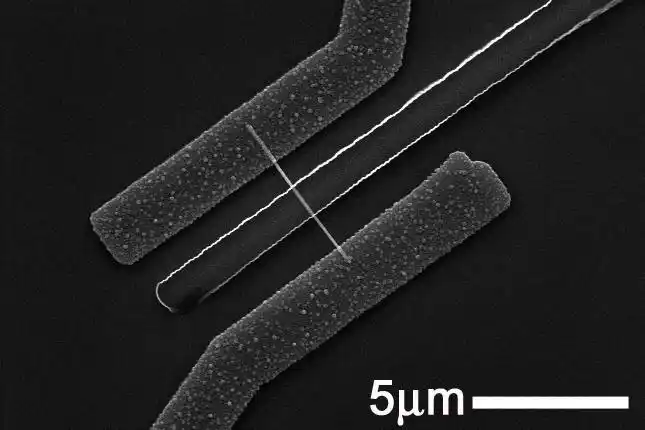افشین رشید
اُستادیار ؛ عضو هیات علمی دانشگاه آزاد اسلامی واحد علوم و تحقیقات تهران
621 یادداشت منتشر شدهNormally, the length of nanowires is more than ۱۰۰۰ times greater than their diameter. This huge difference in ratio (length to diameter) compared to nanowires is often referred to as ۱D materials

Note: Nanowires are just like regular electrical wires except for the fact that they are much smaller. Like normal wires, nanowires can be made from a variety of conductive and semi-conductive materials such as copper, silver, gold, iron, silicon, zinc oxide and germanium. Nanowires can also be made from carbon nanotubes.
Nanowires are less than 100 nm in diameter and can be as small as 3 nm. Typically, nanowires are more than 1000 times larger than their diameter. This huge difference in length-to-diameter ratio compared to nanowires is often referred to as 1D materials. This leads to unique properties not seen in bulk materials, The minute size of nanowires means that the quantum mechanical effects of are of great importance. "Quantum Wires" They use quantum mechanics to produce wires with a wide range of unique electrical properties. These features include quantum tunneling, which allows wires made of carbon nanotubes to conduct very high with electrons passing through the wire in a ballistic manner. >

In the immersion method, nanowires have enough time to transfer from the particles of nanowires to the holes ; The step of forming uniform nanoparticles is done slowly and finally uniform nanowires are formed. Structural investigation with FESEM In the immersion method, nanowires are uniformly formed in all pores and in a wide area in the particles of nanowires.The simple answer to this The question of any particle is less than 100 nm. But like the scale from 1 - 100 nm determines the size range of a nanoparticle. In order to avoid the contact of particles, a cluster of atoms may be removed below 1 nm, but the movement of electrons in nanoparticles is <1 nm. Because the particles are three-dimensional.
Conclusion :
Nanowires are just like regular electrical wires except for the fact that they are much smaller. Like normal wires, nanowires can be made from a variety of conductive and semi-conductive materials such as copper, silver, gold, iron, silicon, zinc oxide and germanium. Nanowires can also be made from carbon nanotubes.